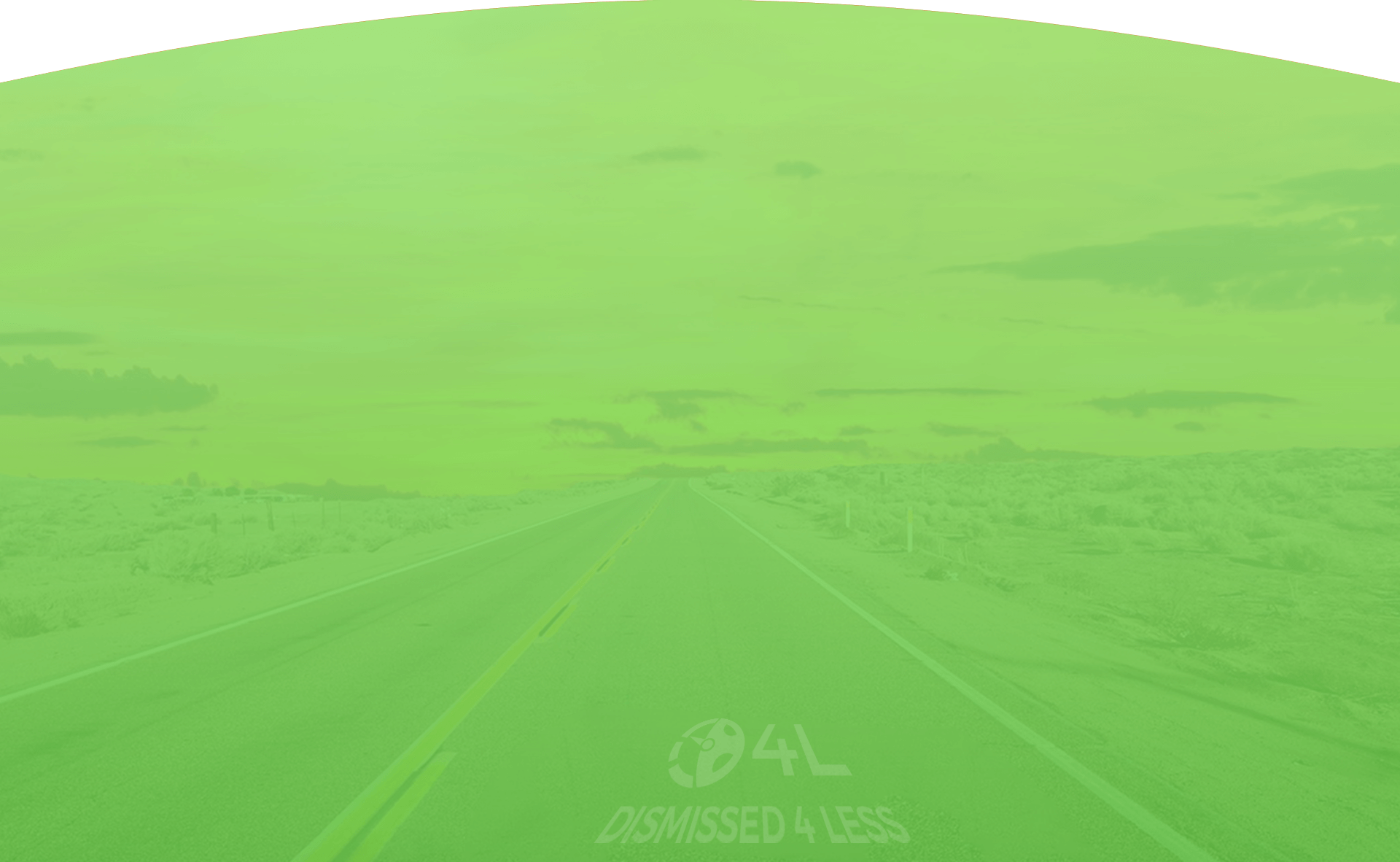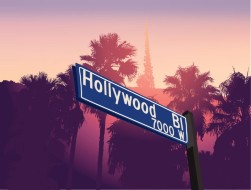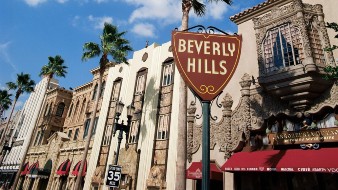Avoiding the Sky-High Cost of a California Speeding Ticket
The world’s first speeding ticket was very intense. The motorist, Walter Arnold, was travelling four times the posted speed limit. Then, a dramatic high-speed chase began. It ended five miles later. The speed limit was 2mph, so Arnold was travelling 8mph. The constable did not have a motorized vehicle, so he chased Arnold on a bicycle.
Ironically, the world’s fastest speeding ticket probably occurred in England as well. In 2007, officers stopped Timothy Brady for travelling 172mph in his Porsche. Brady spent ten weeks in jail and officials suspended his drivers’ license for three years.
Today, speeding tickets are, by far, the most common Vehicle Code violations in California. In fact, many stretches of California highway are permanent speed traps. Interstate 15 near the Nevada/California border is a good example. The speed limit drops from Nevada to California, and the downhill grade is steep. Many drivers, especially large truck drivers, get dinged on this stretch of the Mojave Freeway.
The professional team at Dismissed 4 Less handles thousands of traffic tickets every year. So, we know how to fight speeding tickets successfully and how to reduce the direct and collateral consequences of a California speeding ticket. As a bonus, we do all the legwork. When you partner with us, you do not need to set foot in a courtroom and we do the research for you.
Speeding Ticket Nuts and Bolts
VC 22354 is the basic speed law in California. According to this provision, the posted speed limits are presumptively reasonable speeds. This aspect of a California speeding ticket cuts both ways.
Officers can issue speeding tickets if they believe the driver is travelling too fast for the conditions, even if the driver’s speed is below the posted limit. Drivers can argue their speed, although above the posted limit, was reasonable. More on that defense below. The fine increases as the motorist’s speed increases, as follows:
- $35 for 1-15mph over,
- $70 for 16-25mph over, and
- $100 for more than 26mph over.
These fines do not seem too high for most people. But we haven’t yet covered the penalty assessments and insurance increases. That’s where these tickets get really expensive.
Next comes VC 22348, the dreaded super-speeder ticket. Driving at 100mph means a $500 fine and an automatic 30-day drivers’ license suspension.
When this law was passed, 100mph was tantamount to NASCAR speeds. Today, on many freeways, 100mph is roughly the equivalent of driving 65mph in a 45mph zone. In other words, it’s fast, but not that fast.
Finally, California speeding tickets sometimes give rise to reckless driving citations. Officers often issue these citations if the motorist breaks two laws at once, is guilty of an extreme violation, like driving on a sidewalk, or violates two laws within a few minutes of each other (e.g. a speeding ticket at 12:00 and a red light violation at 12:30).
The reckless driving law is quite subjective. If officers issue these citations, they generally hold up in court. Judges are not supposed to give the benefit of the doubt to police officers, but they often do so anyway.
Consequences of a California Speeding Ticket
Basic speeding is a one-point offense. Super speeding is a two-point offense. The state can suspend your drivers’ license if you accumulate:
- Four points in twelve months,
- Six points in twelve months, or
- Eight points in thirty-six months.
Typically, points remain on a drivers’ license for three years. Additionally, as mentioned, VC 22348 infractions carry mandatory license suspension, regardless of the number of points the driver has.
Penalty assessments and surcharges are usually about $280 for a basic speeding ticket. They might be almost twice that high for a super-speeder infraction.
Additionally, auto insurance rates usually increase significantly. That’s especially true if the motorist was driving more than 15mph over the limit. Most insurance companies consider this speed the line between carelessness and recklessness. Generally, drivers must pay higher rates for at least three years.
Considering Penalty Assessments, surcharges, and rate hikes, the true cost of a California speeding ticket is roughly 33 times the fine. In the old days, when people got speeding tickets, it was cheaper and easier to pay the fine and be done with it. Clearly, that’s no longer the case. These tickets are way too expensive to blow off.
Challenging the Evidence Supporting a California Speeding Ticket
Officers write lots of speeding tickets because they assume they are easy to prove in court. But that’s not always the case. Much depends on the method the officer used to calculate speed, as follows.
Motorist’s Admission
When officers ask drivers “Do you know why I pulled you over?” or “Do you know how fast you were going?”, they aren’t just making small talk. If the motorist says “I was speeding” or “I was going about 80 mph,” these statements might be admissible in court. If that’s the case, there is typically no need for additional evidence.
The takeaway here is to always assert your Fifth Amendment rights during traffic stops. This provision might not apply to the California speeding ticket trial, since these matters are not technically criminal matters. But it applies during traffic stops.
On a related note, the right to remain silent includes the right to refuse performance. So for example, drivers need not perform DUI field tests.
Pacing
Essentially, pacing is guessing a vehicle’s speed based on the speed on one’s own vehicle. If I am travelling the speed limit and you pass me like I’m standing still, it’s safe to assume you are travelling at least 20mph over the limit. If I am a police officer, my opinion carries much more weight in court.
One problem with this method is that police officers, while they are behind the wheel, are not concentrating on speed estimates. They are already multitasking a lot more than other drivers. So, their pacing conclusions are often suspect.
On a related note, many vehicles sound faster than they are. Harley Davidson motorcycles and Dodge muscle cars spring immediately to mind. This perception affects pacing estimates.
Finally, pacing ability itself is sometimes limited. Many officers have little experience in this area. Moreover, some officers try to pace other vehicles while they are standing still. That task is almost impossible.
RADAR
This is not the same radar in a stealth fighter or the Millenium Falcon. Instead, RADAR is an acronym for RAdio Detection And Ranging. A device fires radio waves at an object. The rate at which those radio waves bounce back determine the object’s speed, at least theoretically.
RADAR is imprecise. When an officer aims a RADAR gun at a cluster of vehicles, the results prove that one of them was speeding. The results do not prove which one of them was speeding. In other words, traffic conditions affect RADAR accuracy. Have you been on a SoCal freeway during rush hour recently? The entire Santa Monica Freeway is one big cluster of vehicles.
Like all other machines, RADAR guns require constant maintenance and adjustment. If the maintenance record was spotty, a judge might throw a California speeding ticket out of court.
LIDAR
Laser-enforcement sounds really precise, doesn’t it? However, LIDAR is another acronym, for Light Detection And Ranging. Generally, LIDAR is more accurate than RADAR. LIDAR guns use light waves instead of radio waves. However, distance affects accuracy.
Geneally, officers are trained to aim LIDAR beams at license plates. That technique makes them sound more accurate. But these guns do not project narrow light beams. Instead, they project cones of light. At distances of greater than 1,000 feet, that cone of light is roughly the width of the highway. So, any vehicle within that area might have been guilty of speeding.
LIDAR guns are also much more sophisticated than RADAR guns. They require a lot more regular maintenance. Additionally, not all officers are qualified to operate LIDAR equipment.
Legal Defenses
Lack of evidence defenses are often effective in this area. However, a California speeding ticket is not technically a criminal matter. So, many of the normal Constitutional protections, such as the presumption of innocence, do not apply.
That being said, weak evidence could convince a judge or prosecutor to reduce or dismiss the charges. As outlined below, charge reduction plea bargaining is often very effective in this area.
The aforementioned prima facie limit is one possible legal defense. Recall that the posted speed limit is only a presumptively reasonable speed. Therefore, motorists could argue that their speed was reasonable, given traffic conditions, weather conditions, road conditions, and other factors.
Mojave Freeway/Interstate 15 tickets are a good example. If not for the “Welcome to California” sign, it would be impossible to tell the difference between these two freeways. If 75mph is reasonable on one side of an imaginary line, it’s arguably reasonable on the other side as well.
Counties and other local governments can lower the speed limit. But this discretion is not unlimited. A current engineering study which supports the reduction must be on file. Frequently, the study is outdated or not there at all.
Furthermore, the “emergency” exception applies to California speeding tickets. The law is a bit vague. Emergencies constitute more than house fires, earthquakes, and other disasters. However, being late to work, although it might seem like an emergency, probably does not meet the legal standard. If your emergency was anywhere in between these two extremes, it might hold up in court.
Typos on the ticket sometimes invalidate the citation. If there is a fatal variance between the California speeding ticket pleadings and the proof, a judge might automatically find for the defendant. Examples of a fatal variance include the failure to write down the make and model of the vehicle and other extreme deficiencies.
Since California speeding tickets are not criminal matters, it is easier for prosecutors to amend charging instruments on the fly. If there is a typo on the ticket, judges often allow prosecutors to correct these flaws after the trial has technically started.
So, it’s usually better to present these legal errors in a Trial by Written Declaration. If no prosecutor is present, there is no one to fix the typo. More on Trial by Written Declarations below.
On a related note, police officers only have jurisdiction in the city limits and sheriff’s deputies only have jurisdiction within the county lines. If the jurisdiction is wrong, many prosecutors would rather plead out the ticket than start over. More on that below.
Finally, the mistake of fact defense might work. “I didn’t know speeding was illegal” is never a defense. However, “I didn’t see the speed limit sign” is generally plausible. As a rule of thumb, most judges sustain the mistake of fact defense if the sign was at least 50 percent obscured. Common issues include vandalism, excessive brush, and failure to place a sign in the right place.
The ticket’s purpose is not technically a defense, but it could play a role in this part of the equation.
There is a vigorous, ongoing debate about revenue vs. safety regarding traffic laws in general. For example, when nearby Utah lowered its DUI BAC level to .05, many people opined that it was a revenue move. The lower limit did little to improve safety. It just meant that police officers could write more tickets.
California speeding tickets are right in the middle of this debate. Excessive speed is dangerous. In fact, high velocity is a factor in about a third of the fatal car wrecks in California. The aforementioned 1-15mph citations, however, are a different story. Those speed levels are not particularly dangerous. Arguably, if officers wrote these tickets, the thirst for revenue, or perhaps an illegal ticket quota, was probably the driving force.
Generally, revenue-related speeding tickets are easier to resolve successfully, as outlined below.
California Speeding Ticket Procedure
Plea bargains resolve most court cases. In the traffic ticket context, plea bargains often do little good. Prosecutors can reduce fines, but they cannot touch penalty assessments and surcharges. And, these items are much higher than the fine.
Indirect costs, however, are different. As mentioned, there is a big difference between 15mph over and 16mph over, at least as far as insurance companies are concerned. So, if the prosecutor reduces the charges from 16-25 over to 1-15 over, the insurance savings could be significant.
Prosecutors are usually willing to make these reductions if the evidence is weak or the motorist has a plausible defense.
Roughly the same thing applies to ordinary speeding and 100mph speeding. If prosecutors reduce the charges, that means much lower costs and no mandatory license suspension. Additionally, VC 22348 tickets get even more expensive for subsequent violations.
If the motorists received a speeding violation, a Trial by Written Declaration might be the best way to go. Trial by Written Declarations are essentially remote trials and no appearance is required. Motorists submit their arguments in writing. Then, judges review these arguments and make their decisions.
Frequently, prosecutors do not have an opportunity to rebut the motorist’s arguments, however the officer must submit a written statement. It’s a lot easier to score when the other side does not play defense.
Furthermore, a Trial by Written Declaration is a no-risk proposition. If the judge finds for the motorist, the case is over. If the judge finds the motorist guilty, there are two options. The motorist can accept the judge’s decision, which might include a charge reduction, as outlined above. Or, the driver can request a trial de novo. When a trial de novo is selected the entire affair starts over like nothing happened. However, motorists might have an edge. Since they know what arguments did not work, it’s easier to try another approach that might work.
Since a California speeding ticket is a moving violation, traffic school is usually an option. If the driver pays a small fee and attends traffic school before the deadline, the court dismisses the ticket. That means no fine and no insurance rate hike.
Legally, motorists cannot take defensive driving again for two years. When a ticket is dismissed there is no need to attend traffic school at all.
A California speeding ticket does not just ruin your day. It could also wreak havoc on your family’s finances. Ignoring a ticket is not an option. But partnering with Dismissed 4 Less is definitely an option. In fact, reaching out to us is probably the best way to deal with your California speeding ticket.







